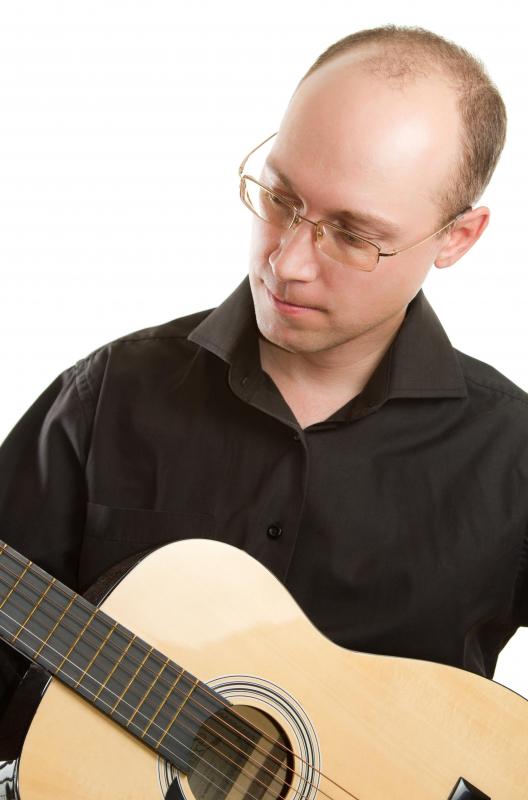At WiseGEEK, we're committed to delivering accurate, trustworthy information. Our expert-authored content is rigorously fact-checked and sourced from credible authorities. Discover how we uphold the highest standards in providing you with reliable knowledge.
What is an Accompanist?
An accompanist is an individual who performs a supporting music role by playing along with a lead musician who is singing or playing the main part of a given musical piece. Generally speaking, an accompanist plays along with a singer, but this is not always the case; sometimes a soloist on an instrument has another musician play a supporting part. The art of playing a supporting musical role is known as accompaniment. An accompaniment piece can be played by a single person or by a whole ensemble, just as a lead part can be performed by an individual or by an ensemble.
Commonly, an accompanist is a piano player providing music for a solo singer. Accompaniment, however, is used in many areas of musical performance, from orchestra pieces to modern rock to musical theater. It can be provided by a single accompanist or by an entire supporting band. Sometimes, performers will switch between supporting roles and lead roles. This is a common practice in jazz bands, which often put on performances in which some songs feature singers and others do not. Sometimes, the music the band performs is the main focus, while in other cases, the singer is the main focus.

An accompanist is generally expected to provide a relatively simply chord progression that provides rhythm and tune without distracting from the lead performer. As such, instruments that can play chords, such as piano, guitar, organ, and electric keyboard, are commonly used for accompaniment. When other instruments such as flutes or violins are used, there are usually several accompanists who play together to produce appropriate harmonics. Sometimes, an accompanist is called upon to provide a bass progression. This typically involves an electric bass, upright bass, or bass drum played to keep rhythm.

Musical theater makes extensive use of accompaniment because of the necessity to provide rhythm and tone for the actors and singers on stage. The degree and type of accompaniment varies greatly and can range from a single pianist or guitarist to a full band with large percussion, brass, woodwind, and string sections. An accompanist generally serves many roles in musical theater from start to finish. He is often called upon to accompany singers during vocal auditions and sometimes is even expected to lead basic vocal rehearsals.

In one performance style known as dialogue accompaniment, two musicians or ensembles take turns as the accompanist and the lead. The lead performs for a while, then drops into the role of accompanist and the other individual or ensemble takes over and performs lead.
AS FEATURED ON:
AS FEATURED ON:













Discuss this Article
Post your comments